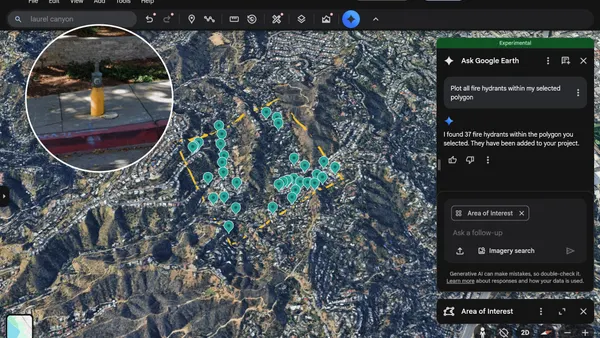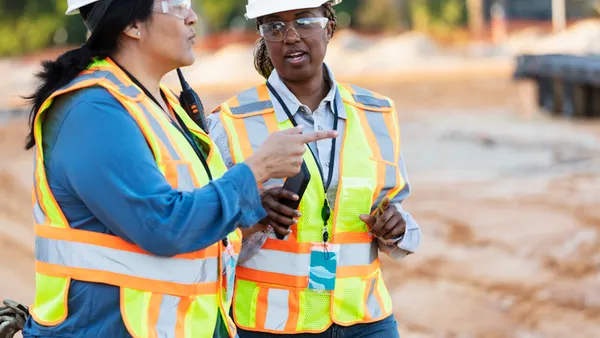Dive Brief:
- The Washington State Department of Labor and Industries (L&I) announced Thursday that it has cited and fined three contractors a total of $107,200 in relation to April's deadly tower crane collapse at a Google office project. in Seattle. The crash to the street below killed two workers and two people in cars.
- L&I's ruling confirmed many industry analyses of the accident, which surmised that contractors and their workers ignored the manufacturer's instructions for dismantling the crane by removing almost all of the tower's pins and sleeves at the same time. This weakened the crane, allowing it to fall after a 45-mph gust of wind hit it.
- L&I cited the owner of the crane, Morrow Equipment LLC, with one willful citation for approving the pins' removal and fined the company $70,000. The department fined general contractor GLY Construction $25,200 for three serious violations — not having qualified personnel on the project site during disassembly; not making sure workers followed manufacturer's instructions; and not factoring in the impact of weather that day. Northwest Tower Crane Services received a $12,000 fine and three serious violation citations for not adhering to manufacturer's instructions; not ensuring that workers understood their tasks; and failure to train its workers adequately. All three have 15 business days to contest the fines and citations.
Dive Insight:
The accident prompted L&I's Division of Occupational Safety and Health (DOSH) to issue a statewide industry hazard alert emphasizing how important it is that crews follow the correct procedures when assembling and tearing down cranes. Part of the division's directive makes it clear that crane companies must follow manufacturer's instructions and that a crane section's pins and connectors should only be removed when crews are preparing that section to be lifted. L&I said that other states and some countries have used its June alert as the basis of their own hazard alerts.
In addition, after asking contractors to report when they are assembling or dismantling tower cranes, DOSH has performed spot inspections during these activities.
Removing all the pins in the way that the Seattle crews did on the day of the collapse is not unusual, said Stever Frein, lead crane instructor at West Coast Training (WCT) in Woodland, Washington.
"They use it as a time shortcut," he said, "and sometimes it doesn't work out. But it's totally against manufacturer's specifications and recommendations about how to take [cranes] apart."
Some crane workers who haven't had the proper instruction on how to assemble and dismantle cranes, Frein said, could believe that removing all the pins at once is acceptable. "[Crane companies] need to train their people properly and make sure that [workers] know it's not allowed."
But crane companies are in high demand right now, and some might see such shortcuts as the way to meet tight schedules. In fact, Frein said, WCT turns out about 12 new crane operators a month and almost all of them have jobs waiting before they even graduate.
"[Crane companies] need to add more money to their bids if that's what it takes so that they can take the extra time to do it safely," he said. "There's no reason to risk somebody's life because you want to save a few hundred dollars."
When all is said and done, Frein said, he believes the Seattle accident collapse will be a wake-up call for a few companies but won't eliminate the problem.
"There might be some companies," Frein said, "that say, 'Hey we've been doing it like this for a long time and look what happened? We can't do it anymore.'" But there will also be companies, he said, that will consider the Seattle collapse a freak accident, blame the wind or the crane contractors for being in too much of a hurry and continue their own unsafe practices.
New OSHA regulations focus not on those crews assembling and dismantling cranes but on those operating them. Crane operators must now be certified or licensed and then undergo periodic training thereafter. Employers have the responsibility of making sure that their operators are qualified on specific crane types, including mobile cranes and tower cranes.











